Sandy Arbuthnott, from Aberdeenshire, comes from a long line of haulage contractors. Bob Weir went to Torphins to see his two highland classics.
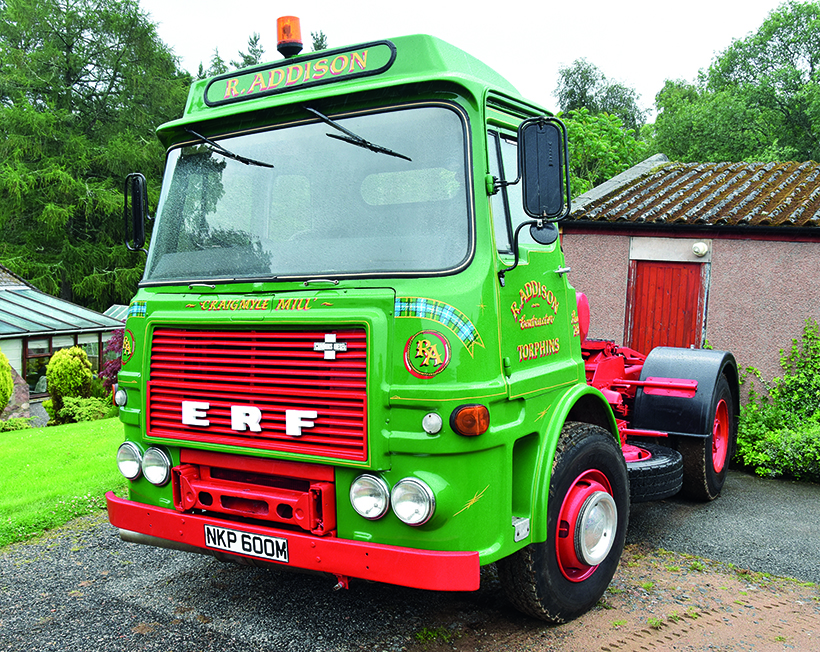
Sandy, his wife Jane and his two highland classics live in the village of Torphins, near Banchory on Royal Deeside. He was born and raised in the area, and has lived there all his life. Torphins main claim to fame is that it’s situated three miles south-east of the hamlet of Lumphanan, where William Shakespeare’s infamous villain Macbeth was killed on August 15th, 1057. It’s also host to a popular vintage vehicle rally held each summer.
Sandy’s family is involved in a logistics company called Robert Addison Haulage, whose lorries have been a familiar site working the UK’s roads since the Second World War.
Locally-known
“Our family bought the company back in 1957,” he explained. “Robert Addison was a well-known farm-related haulage contractor in Aberdeenshire, and my family decided to keep the name. The local area is famous for its livestock, and we owned several cattle floats.
“The company moved into general haulage in the 1970s, although we only finally packed in the cattle floats a short time ago. Nowadays, the business is run by my younger brother, Alastair. He currently operates a fleet of around 15 lorries, and most of the cargo is hauling finished timbers for builders’ merchants and pallet manufacturers. The company’s yard is still based at Craigmyle cornmill in the village.”
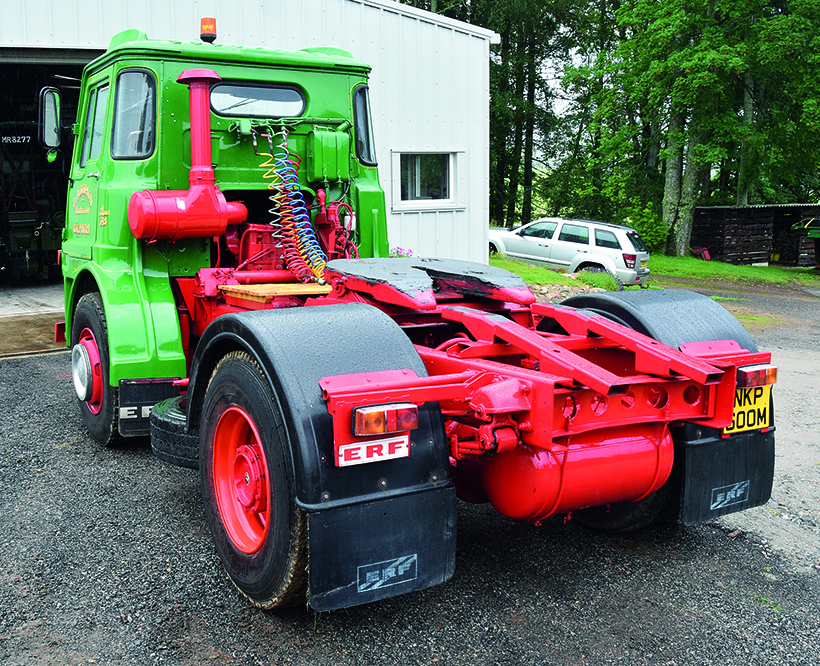
Haulage depots usually hold a lot of expensive assets, and the company was the victim of a recent burglarly. “Some thieves broke into the yard and stole a lot of diesel,” Sandy explained. “The police have a pretty good idea who the culprits are but, without some positive ID, it’s hard to make any charges stick.”
Sandy can also remember the different makes of lorries that the company has used over the years. “When I was growing up, there were no European lorries,” he said. “It was all British manufacturers, including Albion, Leyland and Dodge. As I recall, our first arctic was a DAF, and before the arctic it was all four- and six-wheelers. These days the company uses Scanias and Volvos, like many other haulage operators.”
Engineering interests
Sandy is currently engineering manager at TIS Manufacturing Ltd in Aberdeen, and has been with the company since 2002. “The company specialises in well service and subsea control equipment for the oil and gas industry,” he explained. “I decided not to get involved with the haulage side as I’ve always been more interested in engineering. I’ve been tinkering with stuff since I was a teenager and, over the years, have built several working models. However, I’m still ‘lorry daft’, which is why I run the Lynx, and an ERF A Series. I also use the ERF to transport my 1927 Aveling and Porter steam road roller to vintage shows.”

ERF lorries were always very popular in Scotland, and Aberdeenshire is no exception. “The ERF was new in 1973 to a company called Firmin Coates Limited, although I believe they’re no longer trading,” he said. “My brother, Alastair, acquired the lorry around 2012, from Steve Wilson from the village of Whitecairns, near Aberdeen. Alastair gave it a bit of a makeover, including a new coat of paint in the Addison livery.”
By the end of the 1960s, ERF needed to come up with a new chassis in order to keep pace with the growing competition. The new ‘A’ series met most of these demands. The design featured lighter but stronger chassis rails of parallel depth. It also included lightweight, split cross members, longer outboard-mounted rear springs and rear axle shock absorbers.
Future-proofed chassis
The chassis was designed in such a way that it could handle any changes or modifications needed to comply with future legislation. This included the introduction of new, or improved components. The company also rationalised a lot of its major parts, including the lorry’s air tanks.

The A-Series chassis was available in either 4×2 or 6×2 configuration. The new design had improved roll resistance, and a wide variety of types and lengths could be produced with virtually identical layouts forward of the rear-spring front hangars.
The chassis was capable of handling up to 36 tons (limited to 32 tons in the UK). On the 4×2 variant the drive was through a Lipe-Rollway 4in diameter, twin-plate clutch mated to a Fuller Roadranger RT0909A nine-speed overdrive gearbox and new Kirkstall hub reduction driving axle. The 6×4 model used the same gearbox and clutch.
The four-spring rear suspension was also a new design, and featured interconnected rear ends to give non-reactive characteristics. The brakes were supplied by Stopmaster, and were used on all four wheels, fulfilling main and secondary breaking requirements. There were two actuators on each unit, with effort being applied to both ends of the brake shoe. To meet legal requirements, the cylinders were fed by separate circuits and, on each of the rear brake units, one of the single-diaphragm chambers was replaced by a spring brake actuator for parking.
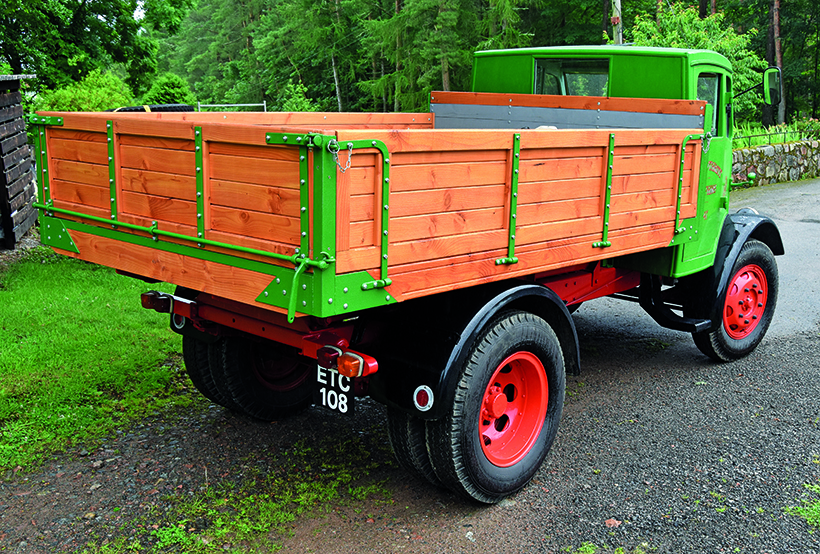
Considerable improvements
The new cab also featured a revised front, and boasted a considerable number of improvements over the old design. These included better insulation to reduce noise, and revised trim.
The A-Series was popular with operators, and the 34-tonne gross tractor unit was available with either a six-cylinder Cummins engine or an eight-cylinder Gardner diesel. They were mostly sold as tractor units, although a few drawbar, four-wheel rigid lorries also left the production line. Most of the company’s rigid lorries kept the old LV chassis, although some shared the 7LV A Series cab. ERF continued to make both types until the introduction of the B Series in late 1974. It’s estimated the company recorded sales of up to £9.7 million.
“Alastair eventually got tired of the lorry, and decided to sell it to me a few months ago,” Sandy explained. “Looking back, I’m not sure I had much choice in the matter! That said, I had recently acquired the steam roller, which I was planning to take to a few rallies. The roller weighs six tons, which takes a bit of shifting. Fortunately, I also bought an Overlander flat trailer, and the combination is ideal. I believe Overlander was bought by Dennison, and I managed to get hold of some spare axles.”

Addison lorries have traditionally been painted in an attractive green, red and gold livery, complete with Scottish flags. The ERF is also signed with the original founder’s name and phone number, along with the tartan of the Arbuthnott clan.
Appropriate colours
“It seemed appropriate to paint the lorry in Addison’s colours, even though I’m not technically involved with the business,” said Sandy. “The name has been associated with Torphins for many years, and is a familiar sight to the locals.”
Fortunately, Sandy has got an HGV license, and managed to pass the test when he was just 23 years old. “Although I never worked for the family business, I decided it would be a good idea to pass my HGV,” he recalls. “I used to work for a coachwork company that specialised in lorries. This occasionally meant moving vehicles around, and the license was useful. I haven’t had to use it much over the years, although it will come in handy if I’m driving the ERF to shows. This particularly applies now I’ve got the steam roller.”
Sandy has always had a passion for steam engines, and the road roller is a recent acquisition. Owning these pre-Second World War giants throws up its own set of challenges, and the boiler must be checked at regular intervals by a qualified inspector. Driving a steam roller on the road requires a different set of skills from getting behind the wheel of a conventional lorry, but Sandy takes it all in his stride.
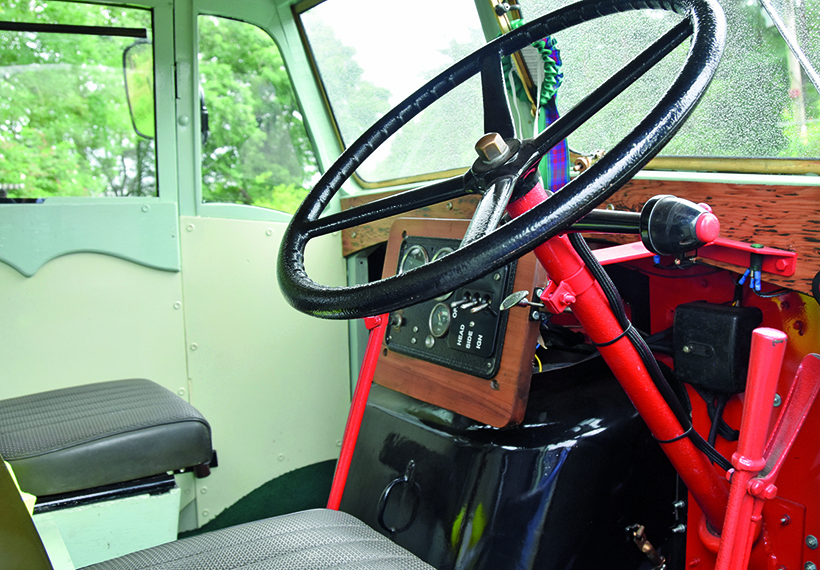
“For one thing, steam rollers can’t brake as quickly as conventional lorries so, although the speed is very slow, you have to keep your wits about you,” he explained. “Handling these big beasts takes a lot of care. Steam engines also have to top up with water every few miles, although it’s a lot cheaper than filling a lorry’s fuel tank with diesel.”
Sampling a Sentinel
Sandy also got the opportunity recently to drive a steam-powered Sentinel lorry, owned by a fellow enthusiast. “It comes as a surprise to younger enthusiasts, but steam-powered vehicles were quite common up to the early 1930s,” he said. “The jury was still out as to whether steam power or conventional fuels would finally win the day, as the running costs were quite similar.”
Richard Foden even left the company to start ERF, as he was sure that diesel power would finally win out against steam. His judgment proved correct and the rest, of course, is history.
Sandy’s second lorry is a 1939 Leyland Lynx, registered ETC 108. “I bought it in October 2014, from enthusiast Keith Dickens down in Cheshire,” he recalls. “He also owns a traction engine, and often turns out for pub runs in the area. I believe the lorry was new to a company called A Darlington Transport, based at Heswall in the Wirral. The company is still trading as Darlingtons Group Limited, and specialises in salt and landscaping products.

“I’ve been told the company owned two Leyland Lynxs back in the 1940s, although the other lorry may have been second-hand. When it was finally stood down, the lorry was parked up in the company yard for many years. It was then decided to restore the vehicle in time for Darlington’s 70th anniversary celebrations, which took place in 2000. Unfortunately, the lorry was then left outside in all weathers, and soon deteriorated.”
Leyland Motors roots
Leyland Motors had a long history dating from 1896, when the Sumner and Spurrier families founded the Lancashire Steam Motor Company at Leyland in Lancashire. The company's first vehicle was a 1.5-ton-capacity steam-powered van.
The Lancashire Steam Motor Company was renamed Leyland Motors in 1907, when it took over Coulthards of Preston. A second factory was built in the neighbouring town of Chorley. The company was still keen on making cars and, in 1920, built the Leyland 8 luxury touring car. At the other end of the scale, Leyland also produced the Trojan Utility Car at its Kingston-on-Thames factory, between 1922 and 1928.
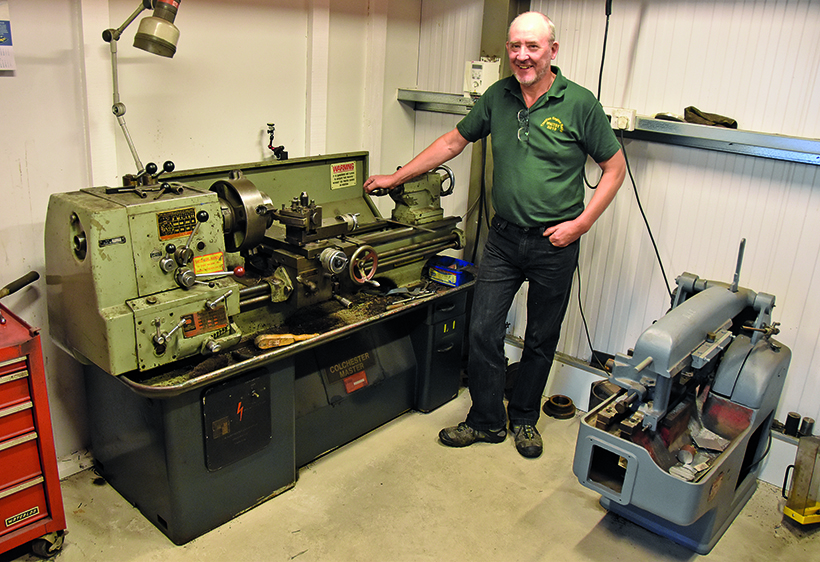
Leyland Motors was controlled by three generations of the Spurrier family, until the retirement of Sir Henry Spurrier in 1964. Sir Henry had inherited control of Leyland Motors from his father in 1942, and successfully guided the firm during the post-Second World War years. Under the family’s guidance, the company enjoyed good labour relations with its workforce and, during their period of stewardship, was reputed to have never lost a day's production through industrial action.
“I was browsing the Internet one evening and spotted the lorry on eBay.” Sandy recalls. “Addison’s had once used Leyland lorries, and I liked the look of the Lynx. The vehicle had been sitting there for some time, probably because the asking price was a bit on the high side. Anyway, I phoned Mr Dickens and agreed to go down to Cheshire. The lorry looked in reasonable condition, so we came to an arrangement.
Restoration No.2
“Although the lorry had been restored, a lot of the work had been carried out using plywood. This isn’t the most hard-wearing material in the world, and it was now starting to rot. Even the cab was looking the worse for wear, so I decided to bring the lorry back up to Scotland and give it a full nut-and-bolt restoration.”
Sandy is a skilled engineer, so the restoration was comparatively straightforward. He’s put together a well-equipped workshop at the back of his house, complete with a lathe and milling equipment.

“One of Addison’s lorries dropped the Lynx off at Craigmyle,” he said. “and, once we’d unloaded the vehicle, we gave it a quick inspection. Much to my relief, the lorry started up and ran OK. It obviously didn’t need a MoT because of its age, so I managed to drive it the couple of miles back to my home. The Leyland conked out a few times and made a lot of noise, but we got there in the end.
“I then gave it a closer inspection and discovered lots of small things that needed attention. In the end, I decided to strip the lorry down and start from scratch. I ended up having to replace 10 feet of chassis, as a lot of the metalwork had rotted through. There was also a hole in the chassis, and the cross-members were in a poor state. Back in the days when it was working, the lorry would have been carrying salt to Liverpool’s docks, which was Darlington’s core business. Salt and metalwork don’t go together, and the salt had taken its toll.”
It was during the restoration that Sandy realised he was running out of space. “I was using an older shed back then,” he explained. “Although there was enough space to strip the chassis, I had problems removing and refitting the cab. The only way around the problem was to build a new shed with more headroom.
“This caused a few delays getting planning approval. Then we had to build the shed complete with foundations and insulation, so I would say the restoration eventually took around two years. The lorry’s first outing was at the 2017 Castle Fraser rally, held in June that year.
“The tipping mechanism still works, and the lorry is fun to drive. The cab is a bit cramped, but it’s OK for the occasional road run. There’s not many of these lorries around, and I plan to keep it for the time being.”
For a money-saving subscription to Heritage Commercials magazine, simply click here

